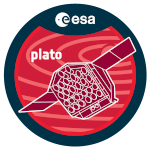Asteroseismology, the study of stellar pulsation, is an indispensable tool
for probing stellar structure, evolution and different stellar dynamics. With
the precise time series photometries from space-borne instruments like MOST,
CoRoT, Kepler, BRITE and TESS, dramatic improvements have been observed
in the asteroseismology of different kinds of oscillating stars. These missions
have significantly shed light on the oscillations of δ Scuti stars - a special class
of oscillators, particularly interesting owing to their fast rotation rates and un-
interpreted pulsation patterns. However, we still lack precise measurements of
their mass, metallicity, and age because it's been challenging to identify differ-
ent modes in their asteroseismic spectra. But recently, Bedding et al. (2020)
discovered 60 δ Scutis with highly regular pulsation patterns from TESS and
Kepler. We have developed machine learning and other techniques to infer the
mass, metallicity, and ages of these stars. Our results indicate that most of
these stars are younger than 30 Myr, having masses around 1.6 M⊙ and metal-
licities below Z = 0.010. By properly identifying the dipole modes, we found
that machine learning techniques can improve age determination of δ Scutis.
Our study shows that the radial modes succinctly contain the information of
stellar luminosity and temperature. We also noticed that the effective surface
temperature has a strong impact on the inferences of all the structure parame-
ters. With the upcoming space data from TESS and PLATO, it is possible to
obtain structure inferences on a much larger ensemble of δ Scutis, which can be
promising to carry out galactic archaeology.
|
|
|
|
Stellar oscillation - a tool to determine structure parameters of δ Scuti pulsators.
1 : Tata Institute for Fundamental Research
2 : Sydney Institute for Astronomy
3 : Stellar Astrophysics Centre [Aarhus]
4 : University of Southern Queensland
5 : NYUAD Center for Space Science
|

 PDF version
PDF version
